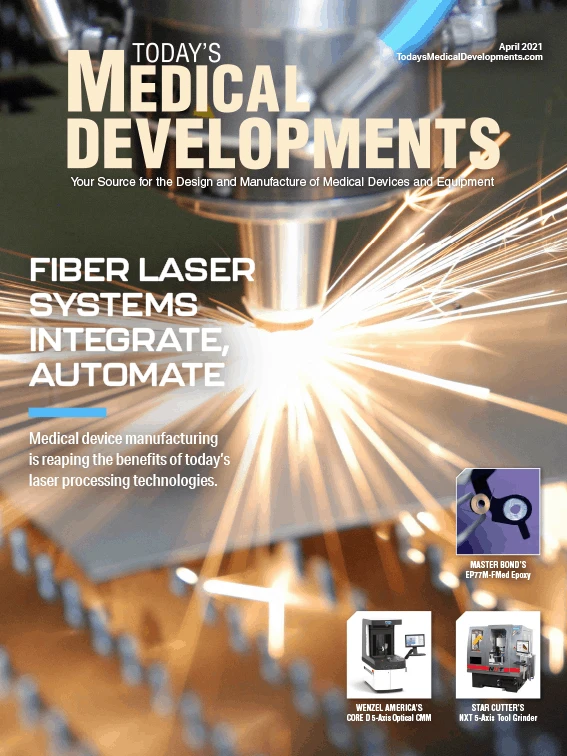
Medical device manufacturers must continually increase production speed and efficiency while reducing labor, spurring automation. However, off-the-shelf equipment won’t accommodate every application, particularly complex ones with robots, conveyors, and a host of equipment for manufacture, assembly, packaging, labeling, and palletizing.
In such cases, medical device manufacturers looking to increase the speed and efficiency of production and packaging lines need an automation partner who can quickly and cost-effectively deliver tailored, custom solutions. Ideally, the partner can design, build, and integrate high-speed, high-volume automated equipment and systems.
It is crucial to partner with an expert supplier to overcome specifications challenges, regulatory requirements, system integration, customization, and the need to complete work on time and within budget.
“While implementing off-the-shelf solutions can be a starting point for some projects, automation incorporating robotics frequently require a custom solution that meets very specific process requirements,” says Leon Gurevich, founder and chief technology officer of Rapid Development Services (RDS), an industrial automation equipment builder providing design, engineering, integration, and fabrication of production machinery. “Even large suppliers in this space will often pass on opportunities if they aren’t easily resolved.”
To avoid delays or failure on larger, more complex projects, Gurevich says it’s particularly important to work with a nimble, flexible supplier with the appropriate expertise. RDS has implemented more than 300 complex projects worldwide and holds more than 40 patents.
“When it comes to automating production, equipment can range from very small to complete lines several hundred feet long that can consist of robots, conveyors, vision systems, server drives, etc.,” Gurevich says. He has worked with Medtronic, Johnson & Johnson, Abbott Labs, and Pfizer and adds that “automation suppliers and integrators need a toolbox full of solutions, including the ability to design and build from scratch to fit together all the pieces of the puzzle.”
RDS typically uses standardized off-the-shelf solutions and integrates them with other systems, but it can design and manufacture equipment and sub-systems from scratch.
This includes automated assembly solutions, inspection systems, packaging equipment, labeling/marking systems, and palletizing automation, as well as filling systems and machine-tending automation.
For example, after a major medical device manufacturer received U.S. Food and Drug Administration (FDA) approval of a real-time insulin pump for continuous glucose monitoring (CGM), RDS was called on to develop a system to package insulin reservoir-syringes into a Multivac Form Fill Seal machine, followed by carton and case packing for ready-to-ship product delivery.
The reservoir-syringe presents to the system in bulk form. The robotic system uses vision inspection to check for the presence of subcomponents before placing reservoir-syringes into the Multivac machine’s cavities. Vision inspection identifies the presence of the plunger, guard, and overall syringe geometry pattern by inspecting a set of 10 units per cycle. The system uses two 6-axis robots, two Vibro-feed bowls, and the Multivac web machine to feed, pick, place, and seal reservoir syringes.
Two cells package more than 120 reservoirs per minute, for a total of 240 units per minute. The packaging system also has a carton erector, and inserts the sealed packages into cartons.


RDS initially installed the system in a California plant, which ran the robotic system trouble-free in a cleanroom for more than 5 years. At the company’s request, RDS disassembled, moved, reinstalled, and restarted the system at a new facility in Puerto Rico, where it’s run trouble-free, three shifts per day, for 10 years.
Whether medical device manufacturers need help to automate production or equipment used in provider settings, partnering with an expert in automation can be the surest route to ensuring compliance, reliability, and efficiency.
“Companies sometimes shy away from automation when only focusing on direct labor savings or short-term return on investment (ROI),” RDS President Sunit Mishra says. “However, if you factor in increased production speeds and improved quality along with reduced waste, labor management savings, labor hiring and training savings, as well as repetitive motion injury, the investment in automation usually provides an attractive ROI in the short term itself… not to mention, our history shows equipment life spans of well over 20 years, where the ongoing benefits continue to accrue to the bottom line for the life of the equipment.”
Rapid Development Services
https://rapidds.com

Explore the April 2021 Issue
Check out more from this issue and find your next story to read.
Latest from Today's Medical Developments
- Arcline to sell Medical Manufacturing Technologies to Perimeter Solutions
- Decline in German machine tool orders bottoming out
- Analysis, trends, and forecasts for the future of additive manufacturing
- BlueForge Alliance Webinar Series Part III: Integrate Nationally, Catalyze Locally
- Robot orders accelerate in Q3
- Pro Shrink TubeChiller makes shrink-fit tool holding safer, easier
- Revolutionizing biocompatibility: The role of amnion in next-generation medical devices
- #56 Lunch + Learn Podcast with Techman Robot + AMET Inc.





